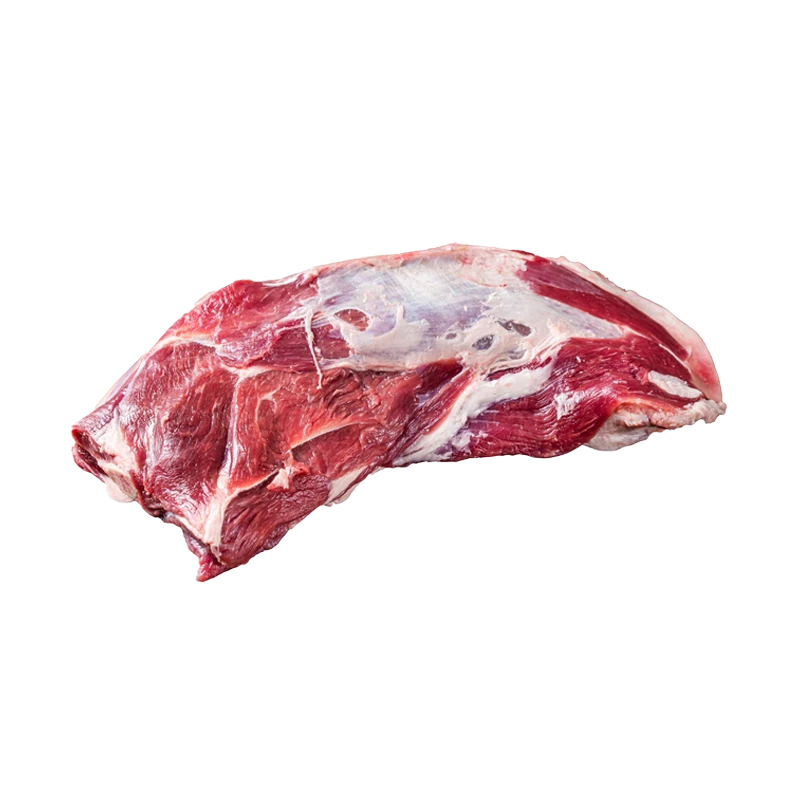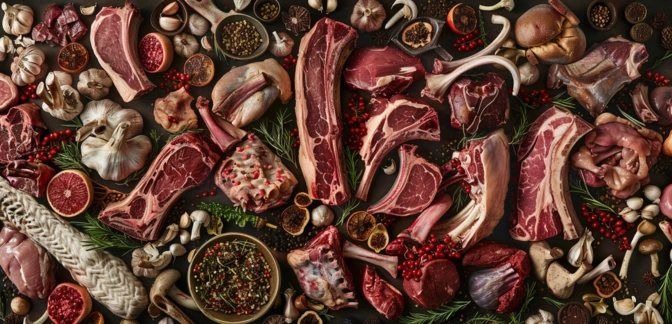Lamb — Nutrients, Health Benefits, And Shopping Tips

Written by Listonic Team
Last update on September 4, 2024
Nutrition facts
Nutrition facts
Amount per 100 g
Calories
🔥 294 kcal
| Nutrition per: 100 g | Value | % Daily Value* |
|---|---|---|
| Carbs | 0 g | - |
| Fiber | 0 g | - |
| Sugars | 0 g | - |
| Glycemic Index | 0 | - |
| Protein | 25 g | 50% |
| Sodium | 72 mg | 3.13% |
| Total Fat | 21 g | 26.92% |
*The % of Daily Value (DV) tells you how much a nutrient in a serving of food contributes to a daily diet. 2,000 calories a day is used for general nutrition advice.
25 g
💪 High Protein Content
Did you know?
Health benefits
- High in protein, essential for muscle growth, repair, and overall body function.
- Rich in essential vitamins and minerals such as Vitamin B12, zinc, iron, and selenium, which support energy metabolism, immune function, and overall health.
- Contains healthy fats, providing energy and supporting cell function.
- Supports muscle health due to its high content of essential amino acids.
Health risks
- High fat content particularly in certain cuts, which can raise cholesterol levels and increase the risk of heart disease when consumed frequently.
- High calorie content which can contribute to weight gain if consumed in large quantities or as part of a calorie-dense meal.
- Potential for contamination with harmful bacteria such as Salmonella or E. coli, particularly if the lamb is not properly cooked to a safe internal temperature.
- Potential for high sodium content in processed or seasoned lamb products, which can contribute to hypertension and increased cardiovascular risks.
How to choose lamb
Lamb should have a deep pink color, with marbling of fat that enhances its flavor when cooked. The meat should feel firm and spring back when pressed.
Do not purchase lamb that is pale or has an excessively fatty texture. Quality lamb will have a tender texture and a rich, slightly gamey flavor that is highly prized in various cuisines.

How to store lamb
Fresh lamb should be stored in the refrigerator and used within a few days. Keep it in its original packaging or transfer to an airtight container. Properly stored, lamb remains fresh and flavorful for your meals.
Improper storage can lead to spoilage and bacterial growth. It's crucial to avoid refreezing thawed lamb to maintain its texture and taste. Ensuring it stays cold and properly handled preserves its quality and safety.
✅ Extra Tip
How long does it last?
Lamb can last for 1-2 days in the refrigerator. For longer storage, lamb can be frozen for up to 6-9 months. Proper packaging, such as vacuum-sealing, helps maintain its quality over longer storage periods.
What to do with leftovers?
Leftover lamb can be used in a variety of hearty and flavorful dishes. Shred the meat and add it to sandwiches, wraps, or salads for a savory bite, or mix it into a stir-fry with vegetables and rice. Lamb is also great when added to pasta dishes, such as a lamb ragu with tomatoes and garlic.
Use lamb in a casserole with potatoes, vegetables, and herbs, or mix it into a shepherd’s pie with mashed potatoes on top. If you have a lot of lamb, consider making a batch of lamb curry with spices, coconut milk, and vegetables, or using the meat in a lamb stew with root vegetables. Lamb can also be added to pitas or flatbreads with tzatziki, tomatoes, and onions, or served as a topping for pizzas or nachos. For a quick snack, reheat the lamb and serve it with a dipping sauce or use it as a filling for spring rolls.
👨⚕️️ Medical disclaimer
Discover products from other categories
Listonic Team
Fact-checked
Our editorial team checked this article to make sure it was accurate at the time of publishing it.
Get the top-rated shopping list app on your phone!







